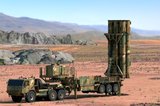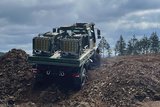Updated M2A1 to increase lethality, survivability
The US Marine Corps Systems Command (MCSC) has detailed how the updated M2A1 .50-caliber machine gun will increase marines' survivability and lethality on the battlefield.
The M2A1 is an upgrade to the legacy M2 machine gun currently used by the US Marine Corps. The new weapon has a number of enhancements to improve usability and safety, including a quick-change barrel, fixed headspace and timing, and a flash hider that reduces the weapon's signature by 95 percent at night.
The current M2 requires the user to manually set headspace and timing before firing, after assembly, and after required barrel changes when the barrel becomes extremely hot from high volumes of fire.
Headspace and timing – the distance between the face of the bolt and the base of the cartridge case when it is fully seated in the chamber; and the adjustment of the gun so that firing takes place when the recoiling parts are in the correct position for firing – need to be correctly adjusted for the weapon to fire accurately and correctly. Improper adjustments can lead to malfunctions that could potentially injure the user or damage the weapon. With fixed headspace and timing the user no longer needs to execute this procedure, and the risk of injury is reduced.
The fixed headspace and timing also enables the use of a quick-change barrel.
Maj Harry Thompson, team lead for general purpose weapons at MCSC, said: 'M2s are the most reliable heavy machine gun.
'The improved M2A1 makes marines more lethal because they're able to get rounds down range quicker. Marines will have better mobility because of the fixed headspace and timing—it's much quicker to move the gun from position to position and put it back into action. Because they're less exposed, marines will have better survivability too.'
General Dynamics is supplying kitsfor the upgrade of the existing .50cal M2 heavy machine gun to the M2A1 configuration, as well as supplying new weapons.
Related Equipment in Defence Insight
More from Land Warfare
-
![Battlefield mobility, made in the UK]()
Battlefield mobility, made in the UK
How does Britain ensure that we can preserve the lives of our soldiers and allies – now and in the future – with homegrown innovation and resilient domestic manufacturing? At Pearson Engineering, we are proud to be a central part of the answer to this increasingly important question.
-
![First capability of Israel’s Iron Beam laser to be delivered by the end of December]()
First capability of Israel’s Iron Beam laser to be delivered by the end of December
Iron Beam is a family of high-energy laser weapon systems currently in development by Rafael Advanced Defense Systems and is designed to provide a low-cost kinetic effect against aerial threats at short distances.
-
![Hanwha awarded $482 million in major step for South Korea’s missile defence programme]()
Hanwha awarded $482 million in major step for South Korea’s missile defence programme
The deal to produce and supply launchers and missiles to South Korea follows a contract placed with Hanwha Systems last month for the manufacture of multi-function radars.
-
![Strengthening Baltic defence capabilities]()
Strengthening Baltic defence capabilities
How Latvia is bolstering its territorial defences, industrial capacity and international cooperation with Dynamit Nobel Defence’s SKORPION2 Remote Mining System.
-
![Land forces review: British Army vehicle programme stalls and company results land]()
Land forces review: British Army vehicle programme stalls and company results land
In the first monthly review of land forces stories, the Shephard team looks back to evaluate the major news events that have impacted the sector. The UK’s Land Mobility Programme was notable but another setback occurred when a market industry day was scrapped.























